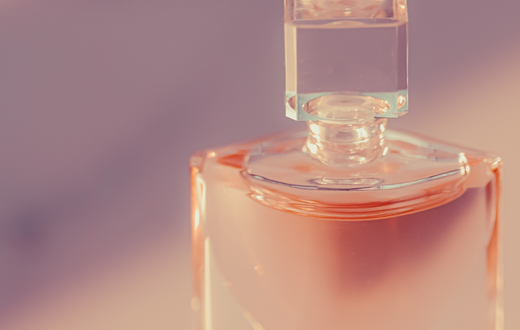Laboratory flash point measurement
As a manufacturer, you want to measure the flash point of your products
What is the flash or flammable point?
The flashpoint is the lowest temperature at which a liquid can form a flammable mixture with air at a given atmospheric pressure.
At this temperature, the liquid produces enough vapour to ignite in the presence of an ignition source, but not enough to sustain combustion independently once the ignition source has been removed. Flash points are particularly relevant to flammable and combustible liquids, such as solvents, fuels and many industrial chemicals and cosmetics.
Why measure the flash point of a substance?
The flash point is an important property for assessing the risk of a liquid catching fire or exploding, particularly when handling, storing and transporting these chemicals.
Understanding the flash point of a liquid is essential for :
Classify liquids into flammability or combustibility categories according to the standards. This classification has direct implications for labelling, handling and transport requirements.
To identify a quality or purity indicator for certain solvents or mixtures, for certain industries, such as pharmaceuticals and cosmetics.
Design industrial installations and select appropriate equipment, including ventilation, cooling and fire suppression systems, to ensure safe operation under specific conditions.
Adjusting the physico-chemical properties of substances to meet safety and regulatory requirements. As part of the development of new chemical products or formulations
FILAB can help you measure the flash point of your formulations
FILAB: flash point measurement
The FILAB laboratory can help you measure the flash point or flammability point of your cosmetic formulations. Thanks to its state-of-the-art analytical facilities and its team of experts, the FILAB laboratory can offer you analytical services from design to manufacture, right up to the marketing of a product.

Afin de répondre avec précision et fiabilité à ces problématiques, FILAB propose un accompagnement sur-mesure pour l’analyse de vos produits et autres formulations ainsi que la mesure du point éclair / point d’inflammabilité selon vos spécifications.
Flash point measurement, reliability and accuracy
Several methods can be used to measure the flash point of a liquid, the most common being the (Closed Cup) method and the (Open Cup method). The choice between the Open Cup and Closed Cup methods depends on the applicable regulations and the specific properties of the liquid to be tested.
Flash point and cosmetic products
Perfumes and other alcohol based cosmetic products must be subjected to flash point testing in accordance with regulations.
A flash point refers to the temperature at which these cosmetic products emit enough vapors to make a flammable mixture with air which can be ignited by an electrical discharge or even under the effects of high heat.
In Europe, the competent authorities classify flammable cosmetic products according to their degree of flammability, i.e., according to their flash point and boiling temperatures :
- Category 1 flammable liquids : these are extremely flammable liquids, with flash points under 23°C and a boiling temperature under 35°C
- Category 2 flammable liquids : these are easily flammable liquids, with flash points under 23°C and a boiling temperature over 35°C
- Category 3 flammable liquids : these are flammable liquids, with flash points between, 23°C and 60°C
Are you looking to cooperate with a reliable and reactive laboratory to measure the flashpoint of your cosmetic products ?
Flash point standards
Standards relating to flammability or combustibility, linked to the flash point, are based on safety criteria and test protocols for assessing the risks associated with chemical substances, thus guiding safe handling, storage and transport practices.
les normes en vigueur
ASTM D3278; D3828; D7236; E502
ISO 3679; ISO 3680
IP 523; IP 524; IP 534
UN Class 3 Non-viscous Flammable Liquids; CLP Regulations
FAQ
Two main methods are generally used to measure the flash point of a substance: the Closed Cup method and the Open Cup method.
In the Closed Cup method, a sample of liquid is heated in a closed vessel until the vapours produced briefly ignite in the presence of an ignition source, thus determining the flash point. The open cup method, on the other hand, involves heating the sample in an open container, where the ignition source is passed over the sample to identify the temperature at which the vapours ignite.
Laboratory flash point analysis is commonly carried out on a variety of liquids to assess their flammability and safety properties:
- Solvents: organic solvents such as ethanol, acetone, and benzene are tested to determine their flash point, for safe storage and handling in laboratories and industries.
- Oils and lubricants: mineral oils, vegetable oils, and lubricants are analysed to ensure they meet safety standards for use in various equipment and engines.
- Fuels: petrol, diesel, paraffin and other fuels require precise knowledge of their flash point to prevent fire risks during transport, storage and use.
- Industrial chemicals: many chemicals used in manufacturing, such as monomers, polymers and intermediates, are tested to ensure safe handling.
- Paints and varnishes: these products often contain volatile solvents whose flash point must be known to determine the appropriate safety precautions during application and drying.
- Perfumes and cosmetics: some cosmetics and perfumes containing alcohols or other volatile substances are also subject to flash point analysis to comply with safety regulations.








